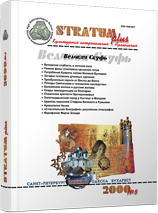Стратиграфия и некоторые проблемы истории Староладожского поселения VIII-X вв.
The Stratigraphy and Some Problems of History of the Old Ladoga Settlement Dated by VIII-X Centuries
Author(s): Sergei L. KuzminSubject(s): History, Archaeology, Middle Ages, 6th to 12th Centuries
Published by: Издательский дом Stratum, Университет «Высшая антропологическая школа»
Summary/Abstract: The city of Ladoga is mentioned in some of the chronicles as the first residence of Rjurik, the founder of the princely dynasty of Rus’, but its recent fame is mostly due to extensive archaeological study. Conducted on a scientific basis for more than a century, this has produced in the last few decades a unique dendrochronological scale allowing scholars to attach precise dates to the successive strata. Located on the lower Volhov, close to its junction with Lake Ladoga, the site provided Scandinavian migrants and merchants with convenient access to the river system of the Eastern Europe, and the first Scandinavian colony appeared there as early as the mid-750s. It is often presented as the nucleus of the future city, rather prematurely in fact as it was soon destroyed by the local, probably Slavic population. The emergence of the city of Ladoga was by no means a linear process. In the confrontation between Scandinavians and indigenous tribes, the settlement was burned to the ground several times and its population changed. Its history is traced here stage by stage and stratum by stratum. The stratigraphy, different1ly described by three generations of scholars, is brought to a unified system of reference. Eleven strata or levels are distinguished in all, from the mid-8th to the late 10th century, each dated by dendrochronology. The buildings of the different levels are presented on a series of plans which allow the reader to follow the evolution of settlement on the site; (he material culture typical of each level is briefly characterised. The most remarkable outcome of this evolution is the emergence of a new synthetic culture, typical of Ladoga (and sometimes improperly described as the sopki culture), which combines Nordic and Slavic elements and which announces the culture of the medieval Rus’.
Journal: Stratum plus. Археология и культурная антропология
- Issue Year: 2000
- Issue No: 5
- Page Range: 50-69
- Page Count: 20
- Language: Russian
- Content File-PDF

